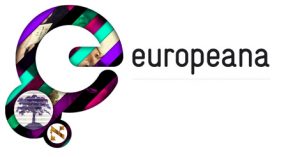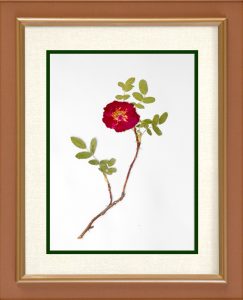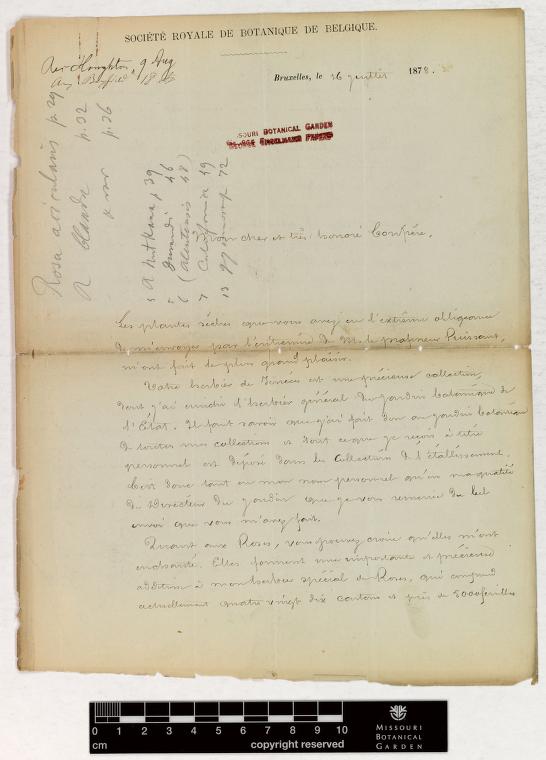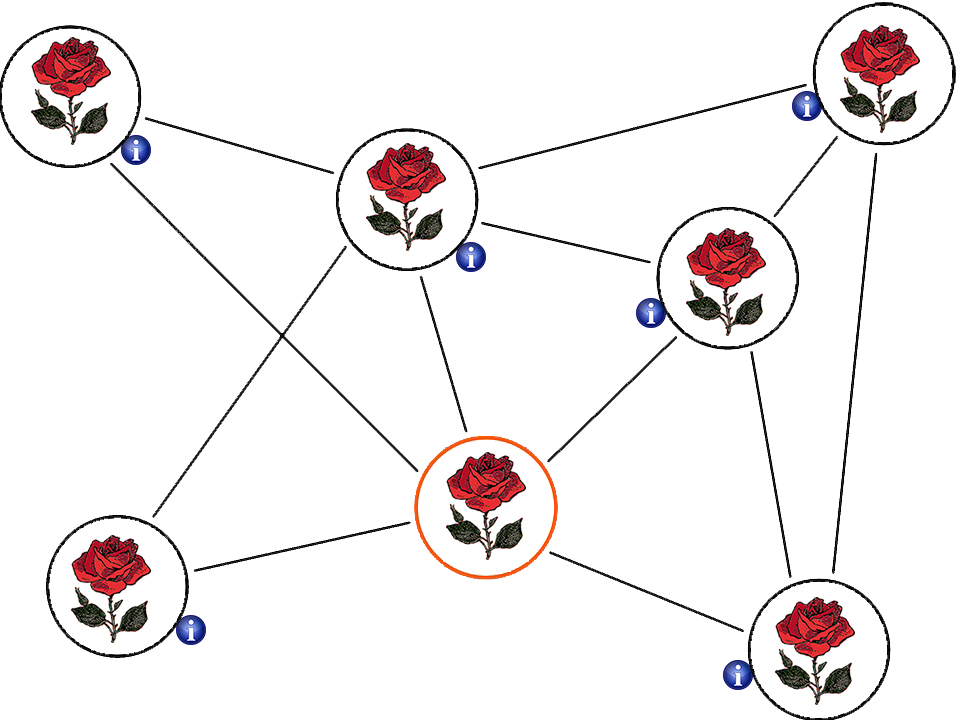

1 Manuela wants to make a taxonomic revision of wild roses of Europe making use of the historical herbaria available digitally online.

2 Manuela comes across a herbarium sheet and has doubts about the identification. She sees two names on the sheet labels: that of François Crépin, a famous botanist from the 19th century who specialised in roses, and also the name of an additional person which might be the original collector who gave the specimen to Crépin. The hand writing is hard to read and the exact locality written on the label is impossible to decipher.

3 Part of Crépin’s correspondence is available on Europeana. Manuela is able to quickly search through the available material using the enriched metadata and finds a number of letters concerning the specimens she is studying. These letters contain more details about the locality and circumstances of the collection, information that was not available on the herbarium sheet. Manuela is able to locate further additional writings of Crépin that contain references to her specimens.
4 Manuela’s analysis leads to a revision in the phylogeny of the roses, including the splitting of an incorrectly lumped taxon. The LinBi platform and the availability of enriched compound objects added valuable information to her research. LinBi not only provided additional historical information, but also enabled the discovery of additional data that contributed to insights new to the field of study.

